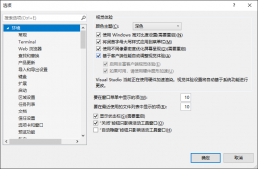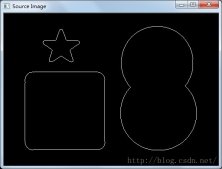一、介绍
C++11中提供了std::bind。bind()函数的意义就像它的函数名一样,是用来绑定函数调用的某些参数的。
bind的思想实际上是一种延迟计算的思想,将可调用对象保存起来,然后在需要的时候再调用。而且这种绑定是非常灵活的,不论是普通函数、函数对象、还是成员函数都可以绑定,而且其参数可以支持占位符,比如你可以这样绑定一个二元函数:
auto f = bind(&func, std::placeholders::_1, std::placeholders::_2);调用的时候通过f(1,2)实现调用。所以,我们可简单的认为std::bind就是std::bind1st和std::bind2nd的加强版。
std::bind函数有两种函数原型,定义如下:
|
1
2
3
4
5
|
template< class F, class... Args >/*unspecified*/ bind( F&& f, Args&&... args ); template< class R, class F, class... Args >/*unspecified*/ bind( F&& f, Args&&... args ); |
Parameters
| f | - | Callable object (function object, pointer to function, reference to function, pointer to member function, or pointer to data member) that will be bound to some arguments |
| args | - |
list of arguments to bind, with the unbound arguments replaced by the placeholders _1, _2, _3... of namespace std::placeholders |
二、实例
这里要先学习仿函数。请参考仿函数的使用
实例1
|
1
2
3
4
5
6
7
8
9
10
11
12
13
14
15
16
17
18
19
20
21
22
23
24
25
26
27
28
29
30
|
#include <iostream>#include <functional>using namespace std; int TestFunc(int a, char c, float f){ cout << a << endl; cout << c << endl; cout << f << endl; return a;} int main(){ auto bindFunc1 = bind(TestFunc, std::placeholders::_1, 'A', 100.1); bindFunc1(10); //等于TestFunc(10,'A', 100.1) cout << "================================= "; auto bindFunc2 = bind(TestFunc, std::placeholders::_2, std::placeholders::_1, 100.1); bindFunc2('B', 10); //等于TestFunc(10,'B', 100.1) cout << "================================= "; auto bindFunc3 = bind(TestFunc, std::placeholders::_2, std::placeholders::_3, std::placeholders::_1); bindFunc3(100.1, 30, 'C'); //等于TestFunc(30,'C', 100.1) return 0;} |

上面这段代码主要说的是bind中std::placeholders的使用。 std::placeholders是一个占位符。当使用bind生成一个新的可调用对象时,std::placeholders表示新的可调用对象的第 几个参数和原函数的第几个参数进行匹配。
|
1
2
3
|
auto bindFunc3 = bind(TestFunc, std::placeholders::_2, std::placeholders::_3, std::placeholders::_1); bindFunc3(100.1, 30, 'C'); |
可以看到,在bind的时候,第一个位置是TestFunc,除了这个,参数的第一个位置为占位符std::placeholders::_2,这就表示,调用bindFunc3的时候,它的第二个参数——即30,和TestFunc的第一个参数匹配,所以std::placeholders::_2为30,以此类推,最后,实际执行的是TestFunc(30,'C', 100.1)。
实例2
|
1
2
3
4
5
6
7
8
9
10
11
12
13
14
15
16
17
18
19
20
21
22
23
24
25
26
27
28
29
30
31
32
33
34
35
36
37
38
39
40
41
42
43
44
45
46
47
48
49
50
51
52
53
54
55
|
#include <random>#include <iostream>#include <memory>#include <functional> void f(int n1, int n2, int n3, const int& n4, int n5){ std::cout << n1 << ' ' << n2 << ' ' << n3 << ' ' << n4 << ' ' << n5 << ' ';} int g(int n1){ return n1;} struct Foo { void print_sum(int n1, int n2) { std::cout << n1 + n2 << ' '; } int data = 10;}; int main(){ using namespace std::placeholders; // for _1, _2, _3... // demonstrates argument reordering and pass-by-reference int n = 7; // (_1 and _2 are from std::placeholders, and represent future // arguments that will be passed to f1) auto f1 = std::bind(f, _2, 42, _1, std::cref(n), n); n = 10; f1(1, 2, 1001); // 1 is bound by _1, 2 is bound by _2, 1001 is unused // makes a call to f(2, 42, 1, n, 7) // nested bind subexpressions share the placeholders auto f2 = std::bind(f, _3, std::bind(g, _3), _3, 4, 5); f2(10, 11, 12); // makes a call to f(12, g(12), 12, 4, 5); // bind to a pointer to member function Foo foo; auto f3 = std::bind(&Foo::print_sum, &foo, 95, _1); f3(5); // bind to a pointer to data member auto f4 = std::bind(&Foo::data, _1); std::cout << f4(foo) << ' '; std::cout << f4(std::make_shared<Foo>(foo)) << ' ' << f4(std::make_unique<Foo>(foo)) << ' '; return 0;} |

参考:
https://en.cppreference.com/w/cpp/utility/functional/bind
https://blog.csdn.net/qq_37653144/article/details/79285221
https://blog.csdn.net/u013654125/article/details/100140328#commentBox
到此这篇关于C++ std::bind用法详解的文章就介绍到这了,更多相关C++ std::bind用法内容请搜索服务器之家以前的文章或继续浏览下面的相关文章希望大家以后多多支持服务器之家!
原文链接:https://blog.csdn.net/sinat_31608641/article/details/113050522














